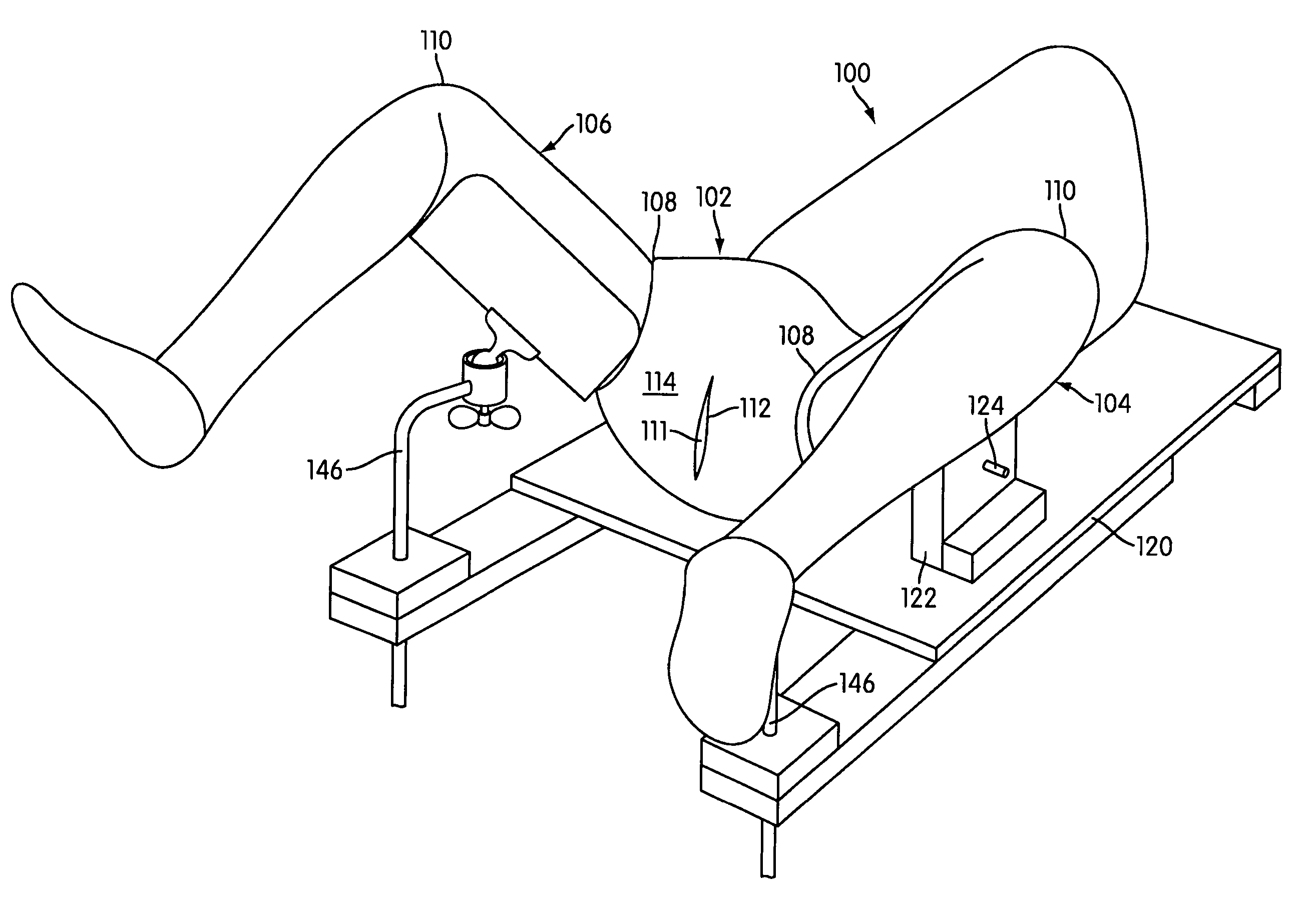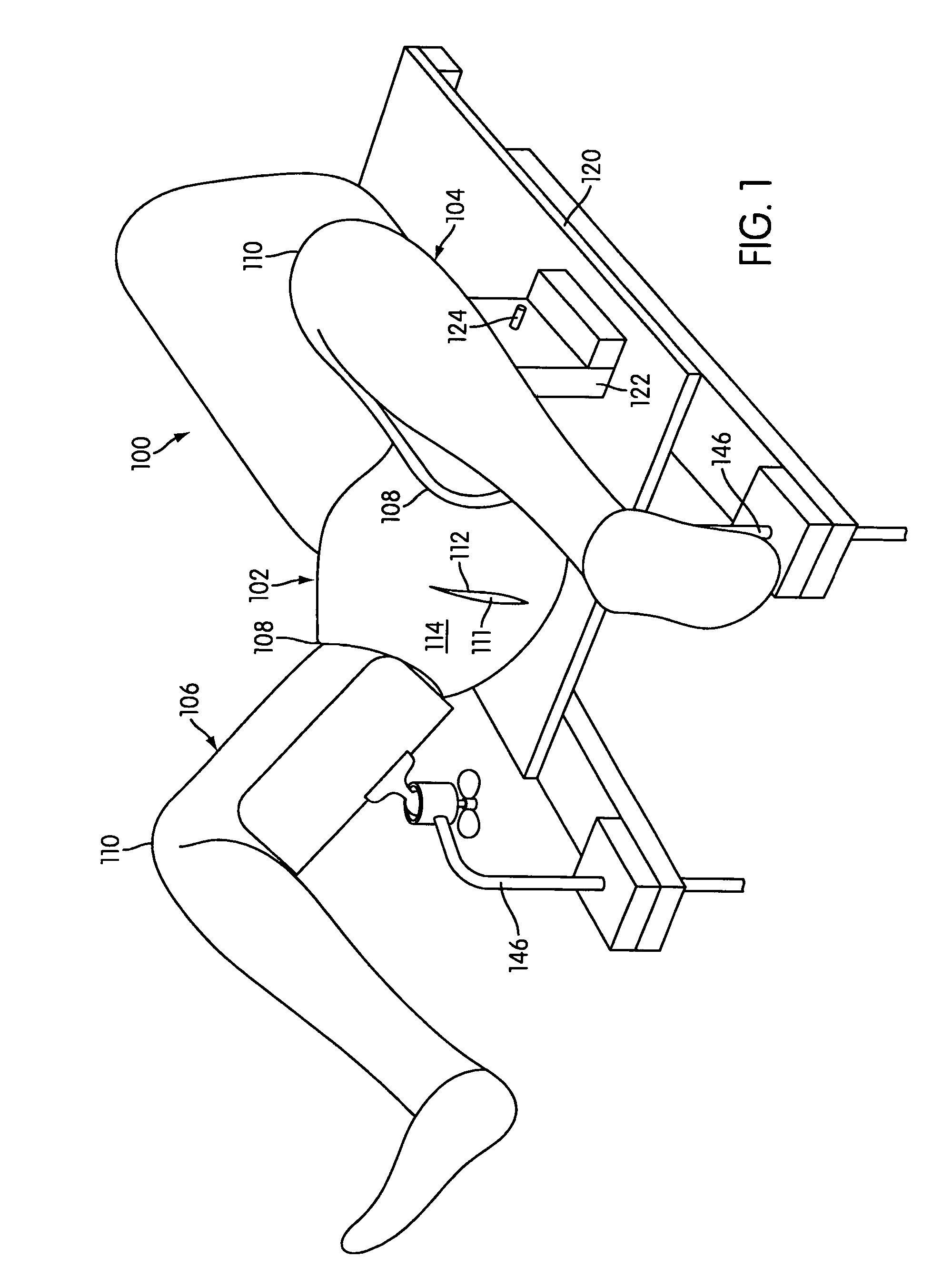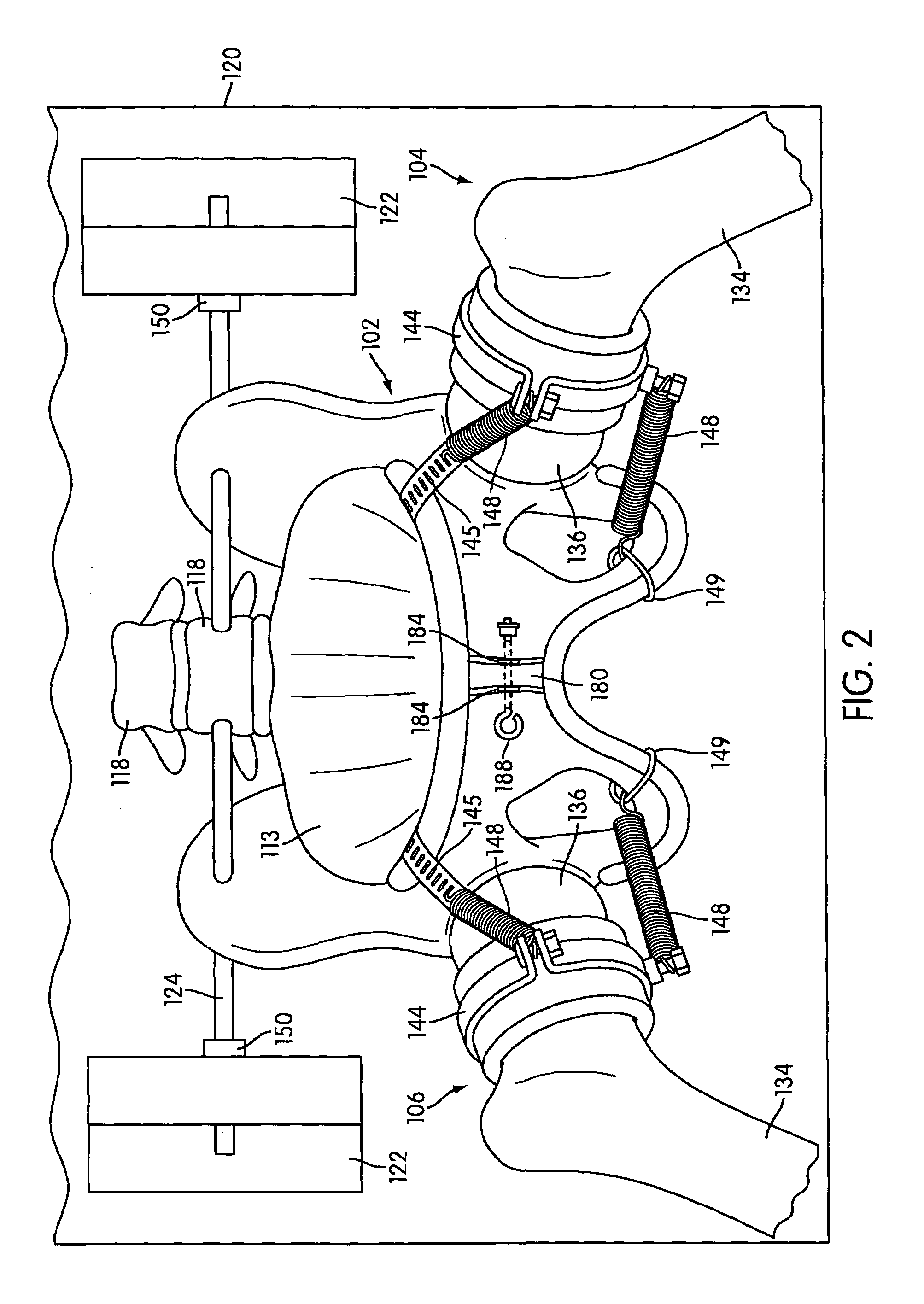Birthing simulator
a simulator and simulation technology, applied in the field of medical simulators, can solve the problems of difficult construction of simulators that are too faithful or too complex, severe harm or death, and cannot produce realistic simulations
- Summary
- Abstract
- Description
- Claims
- Application Information
AI Technical Summary
Benefits of technology
Problems solved by technology
Method used
Image
Examples
Embodiment Construction
[0031]FIG. 1 is a perspective view of a maternal birthing simulator, generally indicated at 100, according to one embodiment of the invention. The maternal birthing simulator 100 has a pelvis 102 and movable left and right legs 104, 106 attached to the pelvis 102. The left and right legs 104, 106 are articulated at the hip so as to define respective hip joints 108, and are articulated at the knee so as to define respective knee joints 110. In the view of FIG. 1, the left and right legs 104, 106 rest in stirrups 146 in the lithotomy position, flexed at the knee and hip joints 108, 110. The pelvis 102 has a birth canal 111 that terminates in an external opening 112 of a size and shape that simulate the vaginal outlet. The opening 112 is defined in a deformable covering 114, which also covers the pelvis 102 and legs 104, 106. In general, the deformable covering 114 simulates the layers of skin, adipose, and muscle tissue found in human anatomy, and provides the legs 104, 106 and the pe...
PUM
 Login to View More
Login to View More Abstract
Description
Claims
Application Information
 Login to View More
Login to View More - R&D
- Intellectual Property
- Life Sciences
- Materials
- Tech Scout
- Unparalleled Data Quality
- Higher Quality Content
- 60% Fewer Hallucinations
Browse by: Latest US Patents, China's latest patents, Technical Efficacy Thesaurus, Application Domain, Technology Topic, Popular Technical Reports.
© 2025 PatSnap. All rights reserved.Legal|Privacy policy|Modern Slavery Act Transparency Statement|Sitemap|About US| Contact US: help@patsnap.com



